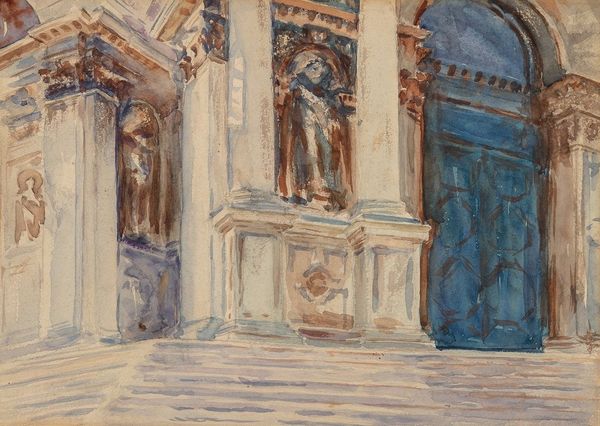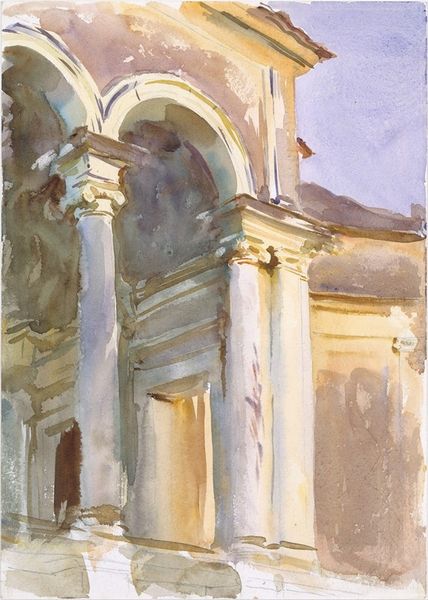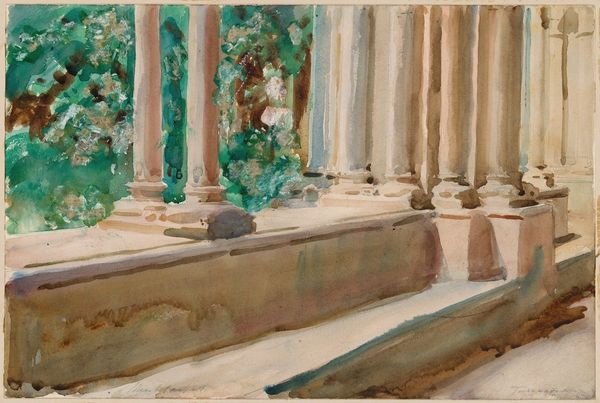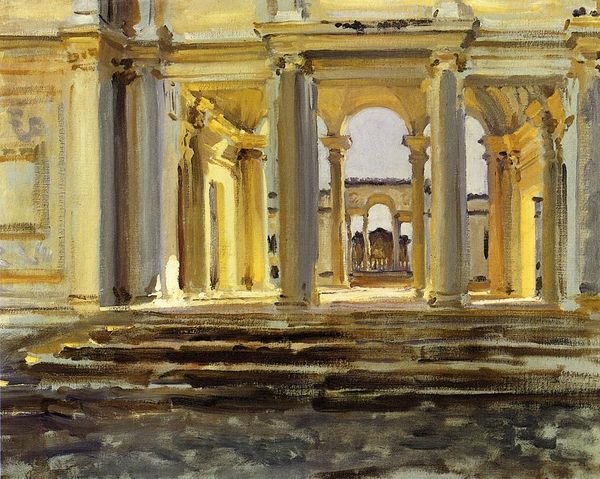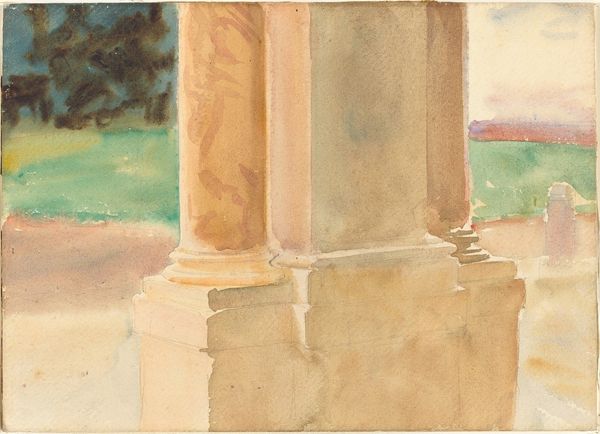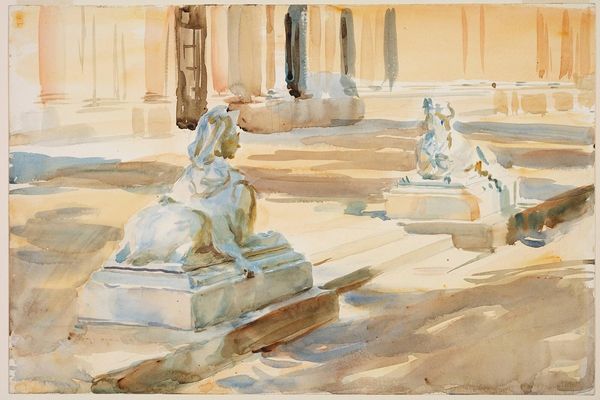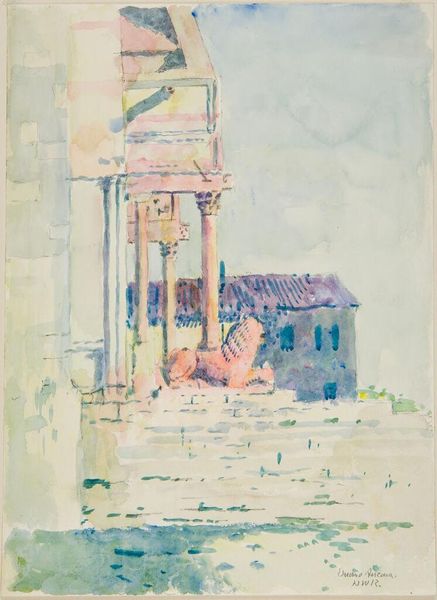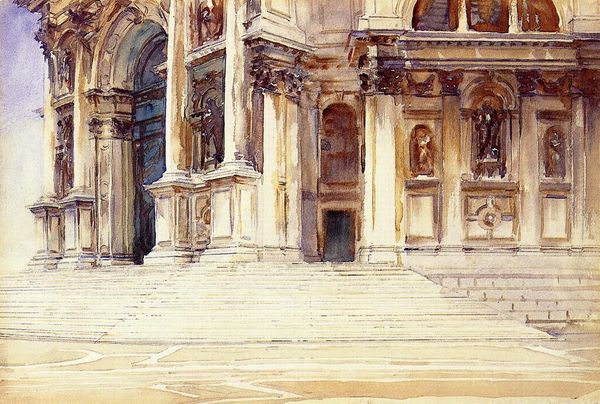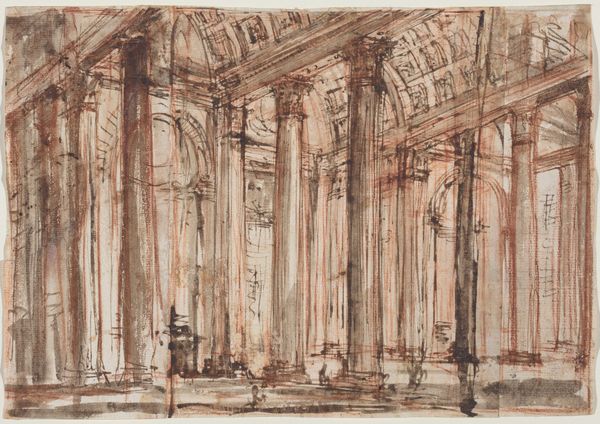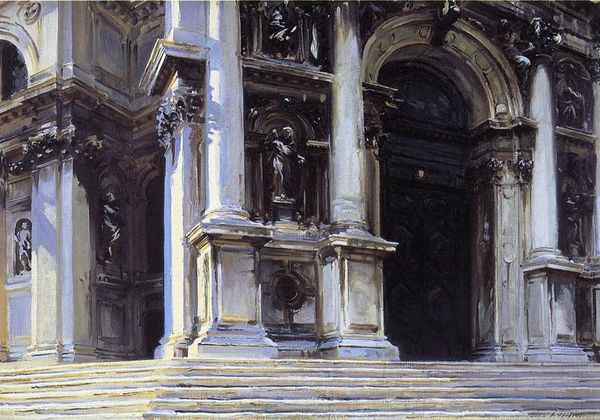
Copyright: Public Domain: Artvee
Curator: It evokes such a luminous stillness. The palette is so muted, almost monochromatic, yet the scene is far from lifeless. Editor: We’re looking at John Singer Sargent's "Santa Maria dei Gesuati, Venice," painted between 1903 and 1904. He’s working in watercolor here, a medium he mastered, capturing this Venetian cityscape. Curator: The architectural details are amazing—the fluted columns, the gentle curves… the repetition of verticals is almost musical, but they feel destabilized because of the chosen angle of perspective, as if the architecture will take flight any moment. It’s not quite photorealistic. Editor: Right. He isn't just representing the building. Notice how the grand façade looms, cropped at the top and sides, a composition technique that brings you right into its shadow. Sargent skillfully employs watercolor's fluidity to translate the Venetian light. And that light bears significant weight in a city like Venice! We could draw a lineage, tracing light back to the earliest symbolic uses of color in iconic mosaic depictions of Byzantium or to the divine light as employed in medieval religious works. What does the prevalence of such light imply? Curator: Interesting. It could connect to the symbolic, suggesting perhaps transcendence through light as filtered through water. I am more struck by how the scale suggests social relations in the city—wealth, the prominence of religious institutions, the contrast between grandeur and everyday life with the humbler structures beside it. Sargent, as a wealthy and rather mobile expatriate, I think embodies the power dynamic, one of gazing and choosing. Editor: I can see how his gaze and choice of subject matter would be an expression of privilege. Yet I wonder if it could also signify his homage to the city’s deep cultural resonance? The color scheme has symbolic weight too – creamy stone that denotes an ideal that stands the test of time; touches of cerulean blue, connoting the divine, spirituality, even mourning... Curator: So, even in its subtleties, this watercolor provides insight into the period’s aesthetics and socio-economic landscape, not merely picturesque Venice, as it is commonly portrayed. Editor: And the church as a lasting testament to a potent spirituality and civic grandeur—Sargent leaves us much to ponder, considering this artwork from all sides.
Comments
No comments
Be the first to comment and join the conversation on the ultimate creative platform.
